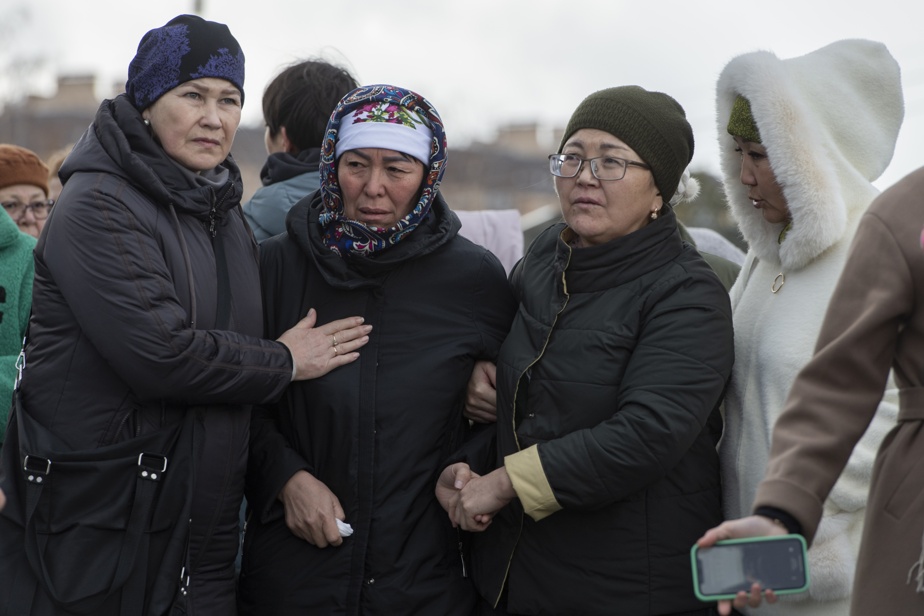(Karaganda) “There are so many funerals, I can’t attend them all.” In front of the Karaganda mosque, Arman Kassimov, a miner, mourns in front of the body of one of his colleagues killed this weekend during the worst mining accident in the history of Kazakhstan.
Carried by around ten men, the remains arrive on the esplanade, while women cry out in pain as the procession passes.
“He was a good guy who you could count on, he gave advice to everyone,” Mr. Kassimov remembers in the autumn drizzle.
With around a hundred people, the young man attended the funeral of Erbulat Adampayev, who had celebrated his 53rd birthday two weeks ago and lost his life in the explosion of the Kostenko mine on the night of Friday to Saturday .
With 45 dead and one missing who will probably not be found alive according to rescuers, this new tragedy on an ArcelorMittal site has put this immense country in Central Asia into mourning.
“The mine is like a pact with the devil. You can support your family, but they take your life,” summarizes Arman Kassimov.
Because in this industrial region, working in the mines is one of the rare ways to receive a salary slightly above average, but at a high price.

PHOTO AGENCE FRANCE-PRESSE
The arrival in Kazakhstan in 1995 of ArcelorMittal took a time away from the dark years of the 1990s when water, heating and electricity were lacking.
The arrival in Kazakhstan in 1995 of ArcelorMittal took a time away from the dark years of the 1990s when water, heating and electricity were lacking.
But the repeated accidents have highlighted the breaches of safety standards in an already particularly dangerous mining area.
“Zero Level Security”
On the northern outskirts of Karaganda, where the steppe begins, a wreath of flowers is placed at the entrance to the Kostenko mine, while rescuers were still busy looking for the last missing miner on Monday.
From the outside, little seems to have changed here since the fall of communism.
At the top of the easels, red stars are still visible, just like on the walls several portraits of Vladimir Lenin, the founder of the Soviet Union, while this mine had been decorated with the eponymous order for his “highly productive and devoted”, according to the established terminology.
Immediately after the accident was announced, the Kazakh government announced that it had reached a preliminary agreement with ArcelorMittal to take control of the local subsidiary, which the group confirmed.
The steel giant was already in the hot seat, while ArcelorMittal’s Kazakh mines had already swallowed up more than a dozen miners in less than a year in this central province of this resource-rich former Soviet republic. natural.
“If there are often tragedies, it means that security is at zero level,” laments Marat Mirguaïazov, representative of a miners’ union.
And this even though ArcelorMittal, headed by Indian businessman Lakshmi Mittal and based in Luxembourg, repeated that it had done everything to improve security on its sites in recent years.
While waiting for future measures to be taken by the government, which promises to improve the working conditions of miners, the work of recognizing the bodies continued on Monday.
“Yesterday, a brigade leader had to go and identify the bodies found each time. It was hard to see him, his tears wouldn’t dry,” recalls Mr. Mirguayazov.
“We will have to do DNA analyses, the explosion was so powerful that you cannot recognize all the bodies,” he continues, while the blast swept away everything over two kilometers and only 14 miners were able to be buried.
